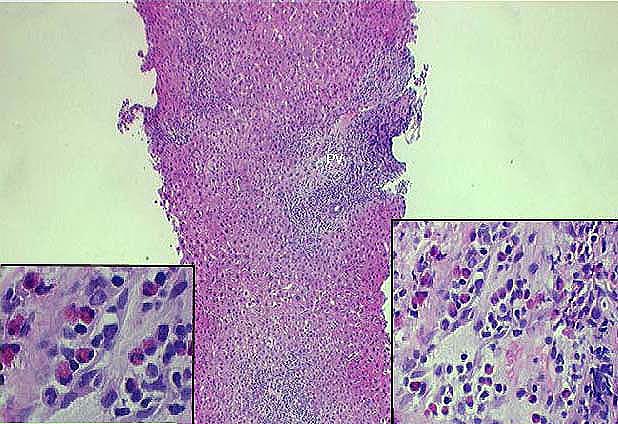
|
| Figure 3. In this example of moderate acute rejection, the portal triads are obviously expanded by an inflammatory infiltrate, which extends underneath the endothelium of the portal veins(PV). On closer examination, the infiltrate in this particular case contains a significant number of eosinophils(insets). On occasion, eosinophils can be the predominant cell type early in acute rejection, simulating an allergic reaction. An eosinophilic portal infiltrate occuring more than 6 months after transplantation evokes a wider differential diagnosis, which includes biliary obstruction, allergic reactions and fungal infections. |